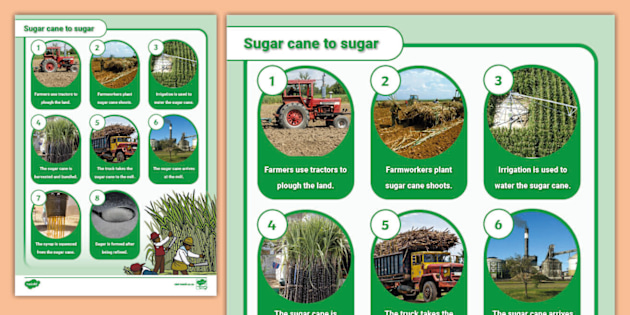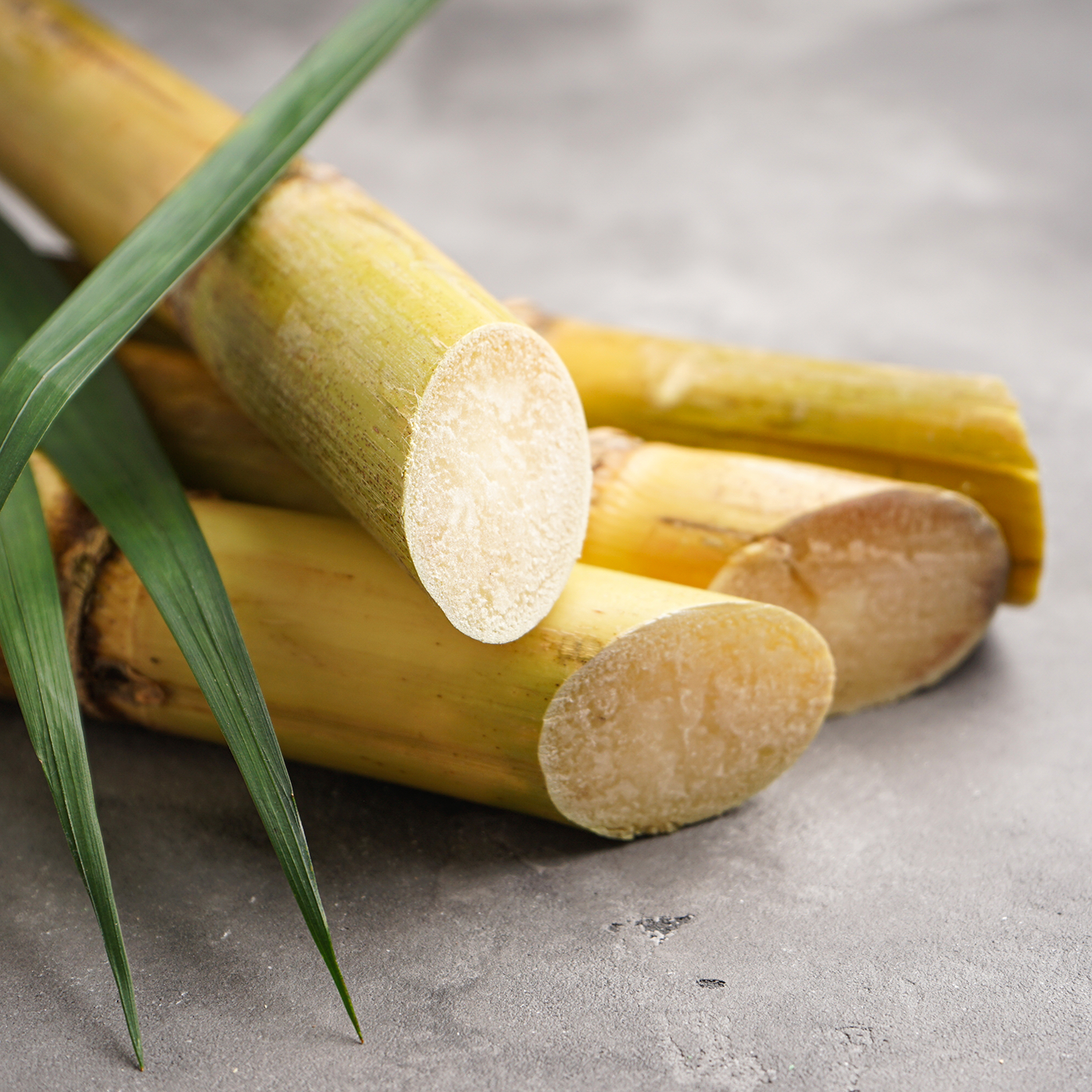What Are Sugar Canes Used For in Modern Agriculture Practices
Discovering the Total Line of Process Chemicals: What Are Sugar Canes Utilized For in Production?
Sugar canes play an essential role in numerous making procedures, serving as a flexible raw material. Their high sucrose web content makes them essential in the food sector, while advancements in biofuels and biodegradable plastics highlight their prospective past standard usages. In addition, sugar walking cane essences are obtaining acknowledgment in drugs and nutraceuticals for their health advantages. The complex applications of sugar walking sticks elevate intriguing questions concerning their future in commercial markets. What possibilities exist ahead?

The Journey of Sugar Cane: From Field to Factory
As the sun climbs over substantial fields, the trip of sugar walking stick begins, marked by meticulous growing and harvesting procedures. Farmers pick excellent selections, guaranteeing robust growth in suitable environments. Regular irrigation and nutrient monitoring are necessary, promoting healthy and balanced stalks rich in sucrose. When mature, the walking cane is gathered, typically making use of mechanical cutters that efficiently collect the stalks.Once accumulated, the sugar walking stick is carried to processing centers where it undertakes crushing and washing to draw out juice. This juice is after that made clear, getting rid of pollutants via sedimentation and filtering. The clear liquid is concentrated by evaporation, and subsequently taken shape to create raw sugar.Throughout this journey, quality assurance is vital, ensuring that the end product fulfills sector standards. The change of sugar walking stick into raw sugar shows a complicated interplay of agriculture and manufacturing, setting the phase for its varied applications in various industries.
Biofuels: Harnessing Energy From Sugar Walking Stick
A considerable portion of the world's biofuel production is stemmed from sugar walking stick, which acts as an eco-friendly power source. This flexible crop is largely refined to extract sucrose, which can be fermented to generate ethanol. Ethanol obtained from sugar walking stick is not just a clean-burning fuel option however likewise contributes to lowering greenhouse gas exhausts compared to typical nonrenewable fuel sources. In nations like Brazil, sugar walking stick biofuel has come to be a significant part of the power matrix, decreasing and powering vehicles reliance on imported oil. The growing of sugar walking stick for biofuels likewise sustains rural economic climates, supplying jobs in farming and handling. Additionally, the byproducts of sugar walking cane handling, such as bagasse, are utilized in power generation, more improving the sustainability of the production cycle. On the whole, sugar walking cane biofuels represent an appealing opportunity for accomplishing power self-reliance while cultivating environmental stewardship.
Biodegradable Plastics: The Sustainable Service
What happens if the service to the international plastic situation exists in biodegradable choices? Eco-friendly plastics, acquired from eco-friendly resources such as sugar canes, offer an innovative strategy to lowering plastic waste. Unlike traditional plastics, which can take centuries to break down, these green products break down normally, lessening environmental impact.The manufacturing of biodegradable plastics includes utilizing sugars from sugar canes to create polylactic acid (PLA) and other biopolymers. These materials preserve similar functionality to traditional plastics, making them suitable for numerous applications, including product packaging, tools, and farming films.As customers and sectors change towards sustainability, naturally degradable plastics provide an engaging choice. They not only reduce dependence on fossil fuels yet likewise support a circular economy by returning to the earth without leaving unsafe deposits. The boosting demand for such materials indicates a click over here significant action toward attending to journalism go to this site requirement for even more sustainable production services in the face of environmental difficulties.
Sugar Walking Stick Essences in Pharmaceuticals and Nutraceuticals

The Future of Sugar Cane in Industrial Applications
As sectors continue to seek eco-friendly and lasting sources, sugar walking stick is poised to play a crucial function in different industrial applications past its traditional use in sugar manufacturing. Its biomass provides an eco-friendly resource for biofuels, minimizing dependence on fossil gas and contributing to lower carbon emissions. In addition, sugar walking stick's by-products, such as bagasse and molasses, are being explored for their possibility in bioplastics and eco-friendly products, dealing with the expanding need for eco-friendly next product packaging solutions.Research is likewise underway to enhance the efficiency of sugar cane derivatives in numerous markets, consisting of fabrics, cosmetics, and construction. By using the distinct buildings of sugar walking stick, suppliers can create innovative items that straighten with consumer preferences for sustainability. As innovation developments, the versatility of sugar cane will likely expand, solidifying its placement as an essential player in the shift toward a more lasting commercial landscape.

Regularly Asked Questions
What Is the Refine of Refining Sugar Cane Into Sugar?
The procedure of refining sugar cane into sugar involves harvesting, squashing to extract juice, clearing up the juice, evaporating water, crystallizing sugar, and ultimately drying and packaging the fine-tuned item for distribution and intake. (What Are Sugar Canes Used For)
Just How Does Sugar Cane Effect Resident Economies?
Sugar walking stick considerably influences regional economic climates by producing tasks, enhancing farming manufacturing, and generating revenue via exports. Its cultivation supports neighborhood organizations and tiny farmers, promoting community development and boosting overall financial security in sugar-producing areas.
Exist Any Kind Of Ecological Interest In Sugar Walking Cane Farming?
Ecological concerns related to sugar cane farming include logging, soil destruction, water usage, and pesticide overflow (What Are Sugar Canes Used For). These issues impact neighborhood ecosystems and contribute to climate modification, prompting phone calls for more sustainable agricultural practices within the market
What Are the Nutritional Advantages of Sugar Cane?
The dietary benefits of sugar walking stick include its rich web content of vitamins, antioxidants, and minerals. It provides all-natural power, sustains hydration, and may help digestion, adding favorably to general health when eaten in small amounts.
Exactly How Does Sugar Walking Stick Contrast to Various Other Plants in Sustainability?
Sugar cane shows higher sustainability contrasted to lots of crops because of its reliable usage of land and water resources, capability to generate biofuels, and potential for carbon sequestration, contributing positively to ecological health and agricultural methods. When fully grown, the walking cane is harvested, usually making use of mechanical cutters that efficiently collect the stalks.Once gathered, the sugar walking cane is transferred to processing facilities where it undertakes washing and milling to extract juice. Unlike traditional plastics, which can take centuries to decay, these environmentally friendly materials break down naturally, reducing environmental impact.The production of eco-friendly plastics entails using sugars from sugar walking sticks to produce polylactic acid (PLA) and various other biopolymers. Typically recognized for their duty in sugar production, sugar walking stick removes are increasingly locating applications in the pharmaceutical and nutraceutical markets. As industries continue to seek sustainable and renewable resources, sugar walking stick is poised to play an essential function in various commercial applications beyond its conventional use in sugar manufacturing. In addition, sugar walking cane's byproducts, such as bagasse and molasses, are being explored for their capacity in bioplastics and naturally degradable materials, addressing the expanding need for environmentally friendly product packaging solutions.Research is likewise underway to boost the performance of sugar walking cane derivatives in numerous industries, consisting of textiles, cosmetics, and building and construction.